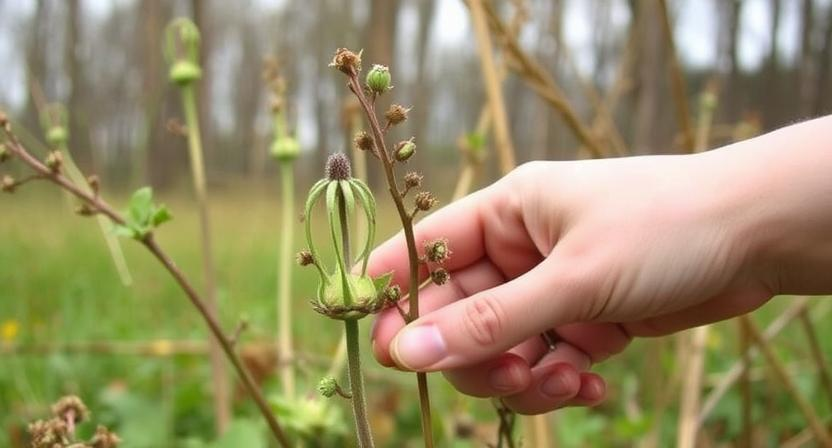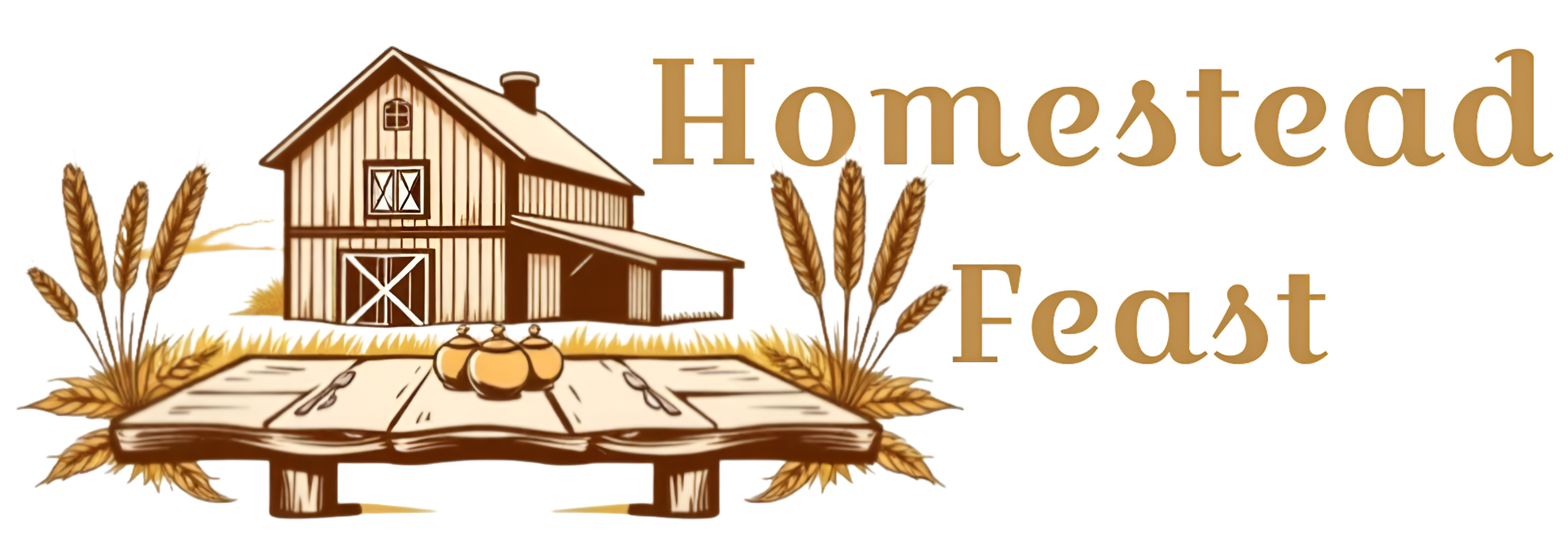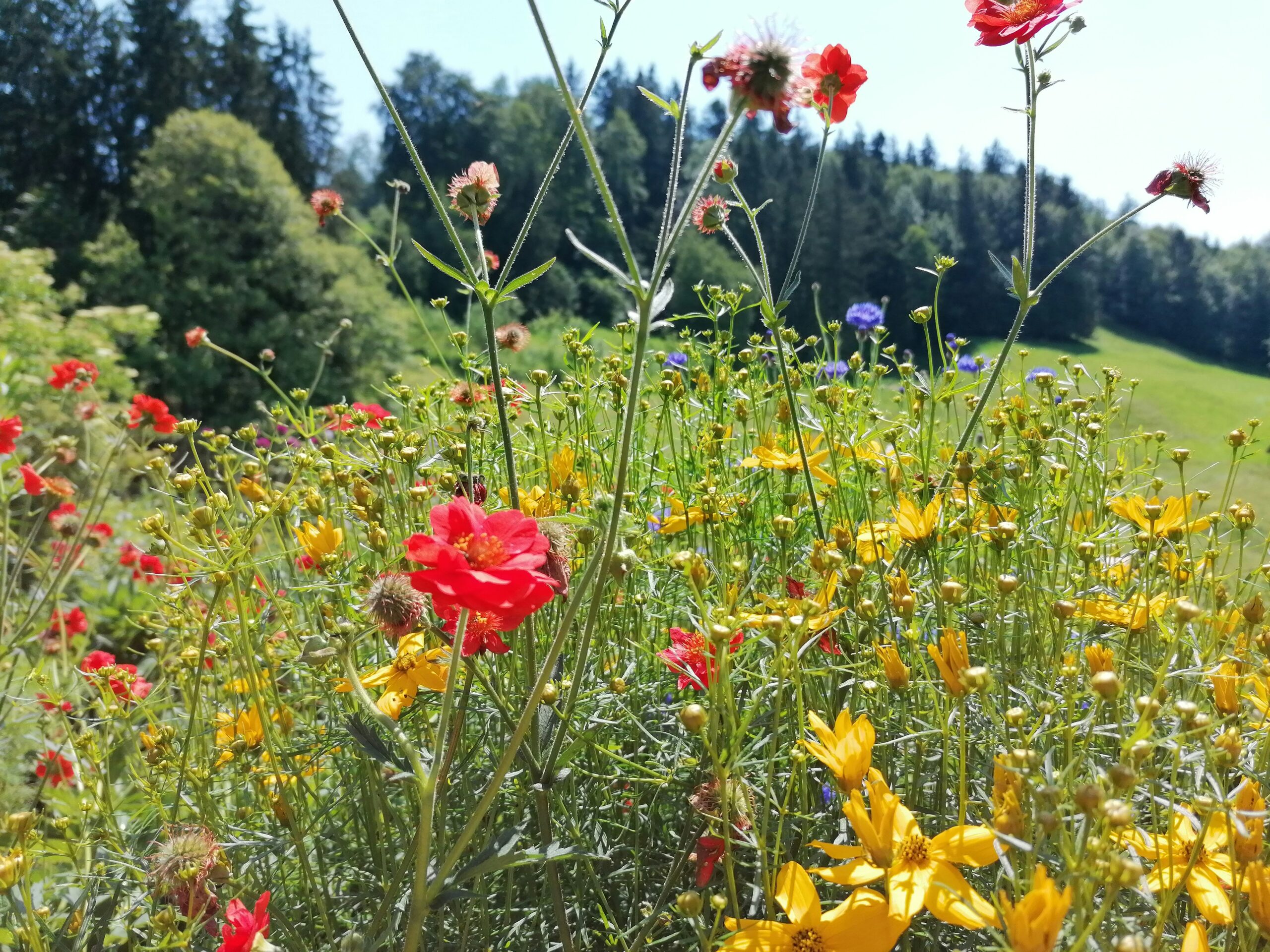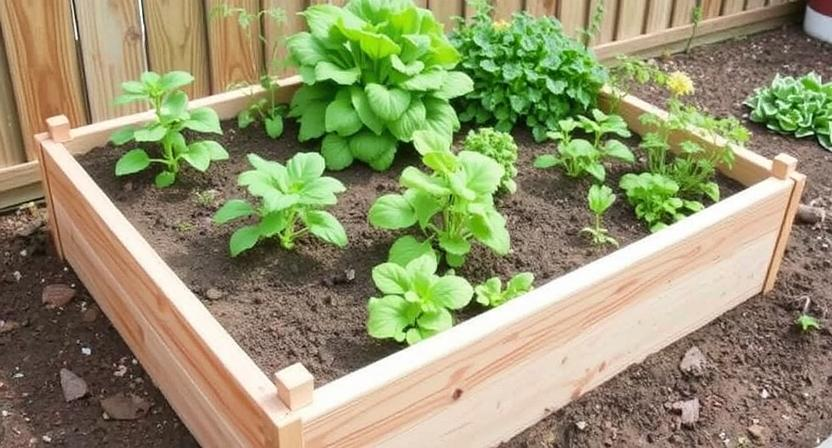How to Identify Edible Wild Plants on Your Homestead

Identifying Edible Wild Plants

When venturing into the world of foraging, correctly identifying edible wild plants is essential for a safe and enjoyable experience. Knowing how to distinguish between various plant species can mean the difference between a delicious addition to your meal and a potentially harmful mistake. One key aspect of identifying edible plants is to pay attention to their unique characteristics, such as leaf shape, color, texture, and arrangement on the stem.
Additionally, it is crucial to familiarize yourself with the different parts of a plant, including leaves, stems, and flowers, as these features can provide valuable clues about the plant’s edibility. By observing and understanding these plant components, you can start to build your knowledge base and confidently identify edible wild plants in the natural environment.
• Pay attention to unique characteristics such as leaf shape, color, texture, and arrangement on the stem
• Familiarize yourself with different parts of a plant including leaves, stems, and flowers
• Observing and understanding plant components can help in confidently identifying edible wild plants
Researching Local Plant Life
Before embarking on a foraging journey in your local area, it is essential to research the plant life that thrives in the environment. By understanding the types of plants that grow in your region, you can better prepare yourself for identifying edible species and avoiding potentially harmful ones. Local botanical gardens, nature centers, and online resources can provide valuable information about the flora in your area.
Exploring the diverse plant life native to your region can also deepen your appreciation for the natural world around you. Take the time to learn about the different habitats where various plants grow, such as woodlands, meadows, and wetlands. By gaining insight into the unique characteristics of the plants in your local ecosystem, you can enhance your foraging experience and develop a greater connection to the land.
• Research the plant life that thrives in your local area before foraging
• Understand types of plants to identify edible species and avoid harmful ones
• Utilize resources like botanical gardens, nature centers, and online sources for information
Exploring the diverse plant life native to your region can also deepen your appreciation for the natural world around you. Take the time to learn about the different habitats where various plants grow, such as woodlands, meadows, and wetlands. By gaining insight into the unique characteristics of the plants in your local ecosystem, you can enhance your foraging experience and develop a greater connection to the land.
Understanding Plant Characteristics
When foraging for wild plants, it is crucial to understand the characteristics of different plant species. One common characteristic to note is the plant’s growth habit, which can be categorized as herbaceous, shrubby, or woody. Herbaceous plants are non-woody and often have soft, green stems, while shrubby plants are usually smaller in size and have multiple woody stems. On the other hand, woody plants have hard, durable stems that provide structure and support for the plant.
Another important characteristic to consider is the plant’s leaf arrangement and shape. Leaves can be arranged in alternate, opposite, or whorled patterns along the stem. Additionally, the shape of the leaves can vary widely, from simple and ovate to compound and palmate. By familiarizing yourself with these plant characteristics, you can better identify and differentiate between various edible and non-edible wild plants in your foraging expeditions.
• Herbaceous plants have soft, green stems
• Shrubby plants are smaller in size with multiple woody stems
• Woody plants have hard, durable stems for support
• Leaves can be arranged in alternate, opposite, or whorled patterns along the stem
• Leaf shapes vary from simple and ovate to compound and palmate
Consulting Field Guides
When delving into the world of foraging for wild plants, field guides can be invaluable resources. These guides are often filled with detailed descriptions, illustrations, and information on where different plants are commonly found. They can help you identify plants accurately and learn about their potential edibility or toxicity. Field guides are essential companions for anyone seeking to explore the diverse plant life in their surroundings.
In addition to aiding in plant identification, field guides can also offer interesting facts about the plants you encounter. Learning about the historical uses, medicinal properties, or cultural significance of different plant species can deepen your appreciation for the natural world. By consulting field guides, foragers can enrich their understanding of local flora and gain a deeper connection to the environment around them.
– Field guides provide detailed descriptions and illustrations for accurate plant identification
– Information on edibility or toxicity of plants helps foragers make informed decisions
– Guides offer interesting facts about historical uses, medicinal properties, and cultural significance of plants
– Consulting field guides can enrich understanding of local flora and deepen connection to the environment
Seeking Expert Advice
When venturing into the world of foraging for wild plants, it is crucial to seek advice from experts who have a deep understanding of local plant life. These individuals can provide valuable insights on plant identification, edibility, and safety considerations. By tapping into their knowledge and experience, foragers can learn to distinguish between various plant species and make informed decisions while exploring the wilderness for edible treasures.
Expert advice can also offer guidance on sustainable foraging practices and responsible harvesting techniques. Seasoned foragers can educate newcomers on the importance of preserving natural habitats, respecting plant populations, and following ethical foraging guidelines. With the support and mentorship of knowledgeable experts, foragers can gain the skills and confidence needed to safely and responsibly enjoy the bounty of wild edible plants that nature has to offer.
• Seeking advice from experts who understand local plant life is crucial when foraging for wild plants
• Experts can provide valuable insights on plant identification, edibility, and safety considerations
• By tapping into their knowledge and experience, foragers can learn to distinguish between various plant species
• Expert advice can offer guidance on sustainable foraging practices and responsible harvesting techniques
• Seasoned foragers can educate newcomers on preserving natural habitats and following ethical guidelines
• With the support of knowledgeable experts, foragers can gain skills needed to safely enjoy wild edible plants
Joining Foraging Groups

Joining foraging groups is a valuable way to connect with like-minded individuals who share a passion for exploring the natural world and identifying edible wild plants. By joining these groups, you can learn from experienced foragers and pick up valuable tips and techniques for safe and sustainable foraging practices. Engaging with a community of foragers can also provide opportunities for group outings, where you can collectively discover and harvest a variety of edible plants while expanding your knowledge and skills.
Foraging groups often organize workshops, classes, and field trips that offer hands-on experience in identifying and gathering wild plants. These gatherings can be a great way to gain confidence in your foraging abilities and discover new edible species that you may not have encountered on your own. Additionally, joining a foraging group can foster a sense of camaraderie and shared appreciation for nature’s bounty, creating a supportive environment for learning and exploring the world of wild edibles.
• Joining foraging groups allows you to connect with like-minded individuals who share a passion for exploring the natural world
• Learn from experienced foragers and pick up valuable tips and techniques for safe and sustainable foraging practices
• Engage in group outings to collectively discover and harvest a variety of edible plants while expanding your knowledge and skills
• Foraging groups often organize workshops, classes, and field trips that offer hands-on experience in identifying and gathering wild plants
• Gain confidence in your foraging abilities and discover new edible species through group gatherings
• Foster a sense of camaraderie and shared appreciation for nature’s bounty by joining a foraging group
Learning About Poisonous Plants
When venturing into the world of foraging for wild plants, it is crucial to educate yourself about the identification of poisonous plants. Many plants in nature can be harmful or even deadly if ingested, so being able to distinguish them from edible varieties is essential for your safety.
Some common poisonous plants to be aware of include poison ivy, hemlock, and deadly nightshade. These plants often have distinct characteristics and can cause severe reactions if consumed. Take the time to familiarize yourself with the appearance and properties of these toxic plants to avoid any potentially dangerous encounters while foraging.
• Poison ivy is known for its three shiny leaves and can cause a painful rash upon contact.
• Hemlock resembles parsley but is highly toxic if ingested, causing respiratory failure.
• Deadly nightshade has dark berries and all parts of the plant are poisonous, leading to symptoms like hallucinations and seizures.
By learning about these poisonous plants and others that may be present in your foraging area, you can better protect yourself from accidental ingestion or contact. Always carry a guidebook or use a reliable app to help with plant identification while out in nature. It’s also wise to avoid touching any unknown plants without gloves to prevent skin irritation or exposure to toxins.
In addition to visual identification, familiarize yourself with the habitats where these poisonous plants typically grow. Knowing where they thrive can help you steer clear of those areas during your foraging expeditions. Remember that some toxic plants may look similar to edible ones, so always double-check before harvesting anything from the wild.
If you suspect that you have come into contact with a poisonous plant or have accidentally ingested one, seek medical attention immediately. Symptoms can vary depending on the type of toxin involved, so it’s crucial not to ignore any signs of poisoning such as nausea, vomiting, dizziness, or difficulty breathing.
Taking the time to educate yourself about poisonous plants will enhance your foraging experiences by allowing you to confidently identify safe options for consumption. Stay vigilant and cautious when exploring new areas in search of wild edibles – knowing what not to eat is just as important as knowing what is safe!
Practicing Safe Foraging Techniques
When foraging for wild plants, it is crucial to prioritize safety throughout the process. Always thoroughly wash and examine any plants before consumption to avoid potential contamination or reactions. Additionally, make sure to accurately identify plants using multiple reliable sources to prevent accidental ingestion of toxic varieties.
Another essential safety practice is to forage in areas free from chemical pesticides, pollutants, or other harmful substances. Be mindful of where you source your plants and avoid collecting near roadsides, industrial areas, or other potentially contaminated locations. By taking precautions and being aware of potential hazards, you can enjoy the rewarding experience of foraging while keeping yourself safe.
• Thoroughly wash and examine plants before consumption
• Accurately identify plants using multiple reliable sources
• Forage in areas free from chemical pesticides, pollutants, or harmful substances
• Avoid collecting near roadsides, industrial areas, or potentially contaminated locations
Noting Location and Habitat
When foraging for wild plants, it is essential to pay close attention to the specific location and habitat in which you find them. Different plants thrive in various environments, so noting these details can help you identify them accurately in the future. Take note of whether the plant is growing in a sunny or shaded area, near water sources, in wooded areas, or along the edges of fields. Understanding the plant’s preferred habitat can guide you to similar locations where you may find more of the same species or related varieties.
Additionally, observing the plant’s surroundings can provide insight into its growth patterns and potential for contamination. For example, plants growing near roadsides may have been exposed to pollutants from passing vehicles, making them unsafe for consumption. By documenting the location and habitat of the plants you encounter, you can not only track their seasonal availability but also make informed decisions about their suitability for foraging.
• Plants thrive in various environments
• Note location and habitat when foraging for wild plants
• Pay attention to sunny or shaded areas, water sources, wooded areas, or edges of fields
• Understanding plant’s preferred habitat can guide you to similar locations
• Observing plant’s surroundings provides insight into growth patterns and potential contamination
• Plants near roadsides may be exposed to pollutants from passing vehicles
• Documenting location and habitat helps track seasonal availability and suitability for foraging
Observing Plant Growth Patterns
Observing plant growth patterns is a crucial aspect of identifying edible wild plants. By closely monitoring the way plants grow and develop over time, foragers can gain valuable insights into the characteristics of different species. Paying attention to factors such as the height of the plant, the arrangement of leaves, and the presence of flowers can help in distinguishing between various types of plants.
Additionally, observing how plants interact with their surrounding environment can offer clues about their edible qualities. Certain plants thrive in specific habitats or soil conditions, so understanding these growth patterns can guide foragers in locating the best spots to search for edible plants. By honing their skills in observing plant growth patterns, foragers can increase their success in identifying safe and delicious wild edibles.
• Height of the plant
• Arrangement of leaves
• Presence of flowers
Observing plant growth patterns is not only important for foragers looking to identify edible wild plants, but it can also provide valuable information for gardeners and farmers. By studying how different plants grow and develop, individuals can optimize their cultivation techniques to ensure healthy and abundant harvests. Understanding the specific requirements of each plant species in terms of sunlight, water, and nutrients is essential for successful gardening or farming practices.
In addition to aiding in plant identification and cultivation, observing growth patterns can also be a fascinating way to connect with nature on a deeper level. Witnessing the intricate processes through which plants grow from seeds into mature specimens can inspire awe and appreciation for the natural world. Taking the time to observe these patterns can foster a sense of mindfulness and gratitude for the beauty and complexity of life around us.
• Optimizing cultivation techniques
• Understanding specific plant requirements
• Connecting with nature on a deeper level
Identifying Leaves, Stems, and Flowers

When identifying wild plants for foraging, it is crucial to pay close attention to the unique characteristics of leaves, stems, and flowers. Leaves come in various shapes, sizes, and textures that can offer valuable clues about the plant’s identity. Some plants have serrated edges, while others may have smooth margins or distinct patterns on the leaf surface. Stems can be woody or herbaceous, hairy or smooth, and may exhibit different colors or textures. Additionally, flowers play a significant role in plant identification, as they can vary in color, shape, and arrangement. Observing these features carefully can help you distinguish between different plant species and determine their edibility.
By familiarizing yourself with the diverse leaf, stem, and flower structures of wild plants, you can enhance your foraging skills and confidently identify edible species in their natural environment. Take note of any details that stand out, such as the presence of thorns, the arrangement of leaves on the stem, or the shape of the flower petals. Referencing field guides or online resources can also provide valuable information on plant morphology and aid in your identification process. Remember to approach each plant observation with care and curiosity, as mastering the art of identifying leaves, stems, and flowers is a fundamental step towards safely foraging wild edibles.
• Leaves come in various shapes, sizes, and textures
• Some plants have serrated edges while others may have smooth margins or distinct patterns on the leaf surface
• Stems can be woody or herbaceous, hairy or smooth, and may exhibit different colors or textures
• Flowers vary in color, shape, and arrangement
By familiarizing yourself with the diverse leaf, stem, and flower structures of wild plants, you can enhance your foraging skills and confidently identify edible species in their natural environment. Take note of any details that stand out such as the presence of thorns, the arrangement of leaves on the stem, or the shape of the flower petals. Referencing field guides or online resources can also provide valuable information on plant morphology and aid in your identification process. Remember to approach each plant observation with care and curiosity as mastering the art of identifying leaves stems flowers is a fundamental step towards safely foraging wild edibles.
Testing Plants for Edibility
To ensure safety when foraging for wild plants, it is crucial to understand how to test plants for edibility. One common method is the skin test, where a small amount of the plant is rubbed on the skin to check for any allergic reactions. Another method involves the lips test, where a tiny portion of the plant is placed on the lips to detect any tingling sensations or discomfort. These preliminary tests can provide valuable insights into the potential effects of consuming the plant.
In addition to skin and lips tests, it is recommended to conduct a taste test by placing a small piece of the plant on the tongue for a few moments. If no adverse reactions occur, the plant can be chewed and held in the mouth for a longer period to assess its taste and texture. It’s important to be cautious when testing unknown plants for edibility and always start with small amounts to minimize any potential risks or adverse reactions.
• Skin test: Rub a small amount of the plant on the skin to check for allergic reactions
• Lips test: Place a tiny portion of the plant on the lips to detect any tingling sensations or discomfort
• Taste test: Put a small piece of the plant on the tongue for a few moments and then chew it to assess taste and texture
• Start with small amounts when testing unknown plants for edibility
• Be cautious and mindful of potential risks or adverse reactions
Avoiding Lookalike Plants
When foraging for wild edibles, it is crucial to be wary of lookalike plants that may closely resemble safe, edible species. One common mistake for novice foragers is misidentifying similar-looking plants that could be potentially harmful or even toxic. For example, some poisonous plants may mimic edible ones in terms of leaf shape, flower color, or growth pattern, leading to confusion and dangerous consequences if consumed. Therefore, it is essential to hone your observation skills and pay attention to finer details when distinguishing between different plant varieties.
To avoid accidental ingestion of toxic plants, it is advisable to study the distinct characteristics of each edible species thoroughly. Take note of any subtle differences in leaf structures, stem textures, or flower arrangements that set them apart from their potentially dangerous counterparts. Additionally, cross-referencing plant descriptions and images from reliable sources such as field guides or websites can provide valuable insights into identifying lookalike plants accurately. Remember that a cautious approach and meticulous attention to detail can help you steer clear of mistaken identities and ensure a safe foraging experience.
• Be cautious of plants that closely resemble safe, edible species
• Poisonous plants may mimic edible ones in appearance
• Hone observation skills and pay attention to finer details when foraging
To avoid the risk of consuming toxic plants, it is essential to thoroughly familiarize yourself with the unique characteristics of each edible species. Look for subtle differences in leaf structures, stem textures, or flower arrangements that distinguish them from potentially harmful lookalikes. Utilizing resources such as field guides or reputable websites can aid in accurately identifying different plant varieties. By adopting a careful approach and being meticulous in your observations, you can minimize the chances of mistakenly ingesting toxic plants and ensure a safe foraging experience.
• Study distinct characteristics of each edible species
• Take note of subtle differences in plant features
• Cross-reference information from reliable sources like field guides or websites
Starting with Common Edible Plants
Before delving into the vast world of foraging for wild plants, it is advisable to start with common edible plants that are easily identifiable and abundantly found in most regions. These familiar plants serve as an excellent introduction to the practice of foraging and provide a safe way to hone your skills in plant identification.
Common edible plants such as dandelions, wild strawberries, and chickweed are often considered beginner-friendly choices for those new to foraging. By familiarizing yourself with these easily recognizable plants, you can gradually build your confidence and knowledge base before venturing into more specialized or uncommon wild edibles.
• Dandelions are easily identifiable with their bright yellow flowers and toothed leaves, making them a popular choice for salads or teas.
• Wild strawberries can be found in wooded areas or meadows, offering a sweet and flavorful treat when ripe.
• Chickweed is a common weed that grows low to the ground with small white flowers, perfect for adding to soups or stir-fries.
Experimenting with Recipes
When it comes to foraging for wild edible plants, experimenting with recipes can open up a whole new world of culinary delights. Once you have identified safe and edible plants, exploring different ways to incorporate them into your meals can be both exciting and rewarding. Whether you decide to sauté wild greens, bake with foraged berries, or brew teas from assorted herbs, experimenting with recipes allows you to fully appreciate the flavors and nutritional benefits of wild plants.
By getting creative in the kitchen with your foraged finds, you have the opportunity to not only diversify your diet but also connect more deeply with nature. Trying out various cooking techniques and flavor combinations can help you to discover new favorite dishes and expand your culinary skills. As you experiment with recipes using wild plants, remember to start small and gradually increase your repertoire to ensure that you are enjoying a well-rounded and balanced diet.
• Incorporating wild greens into salads or stir-fries can add a unique twist to your meals
• Baking with foraged berries can result in delicious pies, muffins, or jams
• Brewing teas from assorted herbs can provide both flavor and potential health benefits
• Trying out different preservation methods such as pickling or drying can extend the shelf life of your foraged finds
Creating a Foraging Plan

When embarking on a foraging expedition, it’s essential to establish a well-thought-out plan to ensure a successful and enjoyable experience. Begin by researching the local plant life in the area where you will be foraging. Identify common edible plants as well as any poisonous species to steer clear of. Understanding the characteristics of different plants will help you recognize them in the wild and distinguish between various species.
Next, take note of the location and habitat where you will be foraging. Different plants thrive in different environments, so being aware of the specific growing conditions of the plants you are seeking will increase your chances of finding them. Consider the time of year and seasonal changes that may affect plant availability and growth patterns in the area you plan to explore.
• Research the local plant life in the foraging area
• Identify common edible plants and poisonous species to avoid
• Understand the characteristics of different plants to recognize them in the wild
• Take note of the location and habitat where you will be foraging
• Be aware of specific growing conditions needed by the plants you are seeking
• Consider seasonal changes that may affect plant availability and growth patterns
Building a Foraging Kit
A well-prepared foraging kit is essential for those who wish to venture into the world of wild plant food discovery. Equip yourself with a sturdy backpack to carry all your essential tools and supplies. A sharp knife with a sheath, a pair of gardening gloves, and a small digging tool are basic necessities to include in your kit.
In addition to tools, it’s important to pack some additional items for safety and practicality. Pack a first aid kit with essentials like bandages, antiseptic wipes, and tweezers in case of minor accidents. Don’t forget to bring along a water bottle to stay hydrated during your foraging adventures as well.
• A well-prepared foraging kit is essential for those who wish to venture into the world of wild plant food discovery.
• Equip yourself with a sturdy backpack to carry all your essential tools and supplies.
• A sharp knife with a sheath, a pair of gardening gloves, and a small digging tool are basic necessities to include in your kit.
• Pack a first aid kit with essentials like bandages, antiseptic wipes, and tweezers in case of minor accidents.
• Don’t forget to bring along a water bottle to stay hydrated during your foraging adventures.
Documenting Your Finds
After a successful foraging expedition, it’s essential to document your finds to enhance your knowledge and foraging skills. By keeping a detailed record of the plants you discovered, you can create a personal database that helps you identify and remember various species. Include information such as the plant’s common and scientific names, where it was found, the date it was collected, and any distinct features that stood out to you. This documentation not only serves as a reference for future foraging trips but also allows you to track your progress in recognizing different plants.
In addition to written notes, consider taking photographs of the plants you encounter. Visual documentation can be particularly helpful when it comes to recalling the characteristics of certain species. Capture images of the leaves, stems, flowers, and any other identifying features that can aid in plant identification. Organizing your photos alongside your written records can create a comprehensive documentation of your foraging journey and support your learning process.
Documenting Your Finds
• After a successful foraging expedition, it’s essential to document your finds to enhance your knowledge and foraging skills.
• Keeping a detailed record of the plants you discovered can help create a personal database that aids in identifying various species.
• Include information such as the plant’s common and scientific names, where it was found, the date it was collected, and any distinct features that stood out to you.
• This documentation serves as a reference for future foraging trips and allows you to track your progress in recognizing different plants.
In addition to written notes, consider taking photographs of the plants you encounter. Visual documentation can be particularly helpful when recalling characteristics of certain species. Capture images of leaves, stems, flowers, and other identifying features that aid in plant identification. Organizing photos alongside written records creates a comprehensive documentation of your foraging journey and supports your learning process.
Sharing Knowledge with Others
Another important aspect of foraging is sharing the knowledge you have gathered with others. Whether it’s friends, family members, or fellow foragers, spreading the information you have learned about identifying edible wild plants is crucial for promoting safe and sustainable foraging practices. By sharing your insights and experiences, you not only help others to expand their foraging skills but also contribute to the preservation of plant biodiversity in local ecosystems.
Engaging in conversations about foraging, participating in community workshops, or even creating online platforms to share tips and resources are all effective ways to pass on your knowledge. Encouraging others to appreciate the abundance of nature’s bounty and teaching them how to forage responsibly ensures that the tradition continues to thrive for generations to come. Remember, the more we educate and empower each other, the more we can enjoy the benefits of foraging while respecting the environment.
• Sharing knowledge with others is crucial for promoting safe and sustainable foraging practices
• Spreading information about identifying edible wild plants helps in preserving plant biodiversity in local ecosystems
• Engaging in conversations, participating in workshops, or creating online platforms are effective ways to pass on your knowledge
• Encouraging others to appreciate nature’s bounty and teaching responsible foraging ensures the tradition thrives for generations
• Educating and empowering each other leads to enjoying the benefits of foraging while respecting the environment
Enjoying the Fruits of Your Labor
After putting in the time and effort to forage for edible wild plants, the ultimate reward lies in savoring the fruits of your labor. Whether you prepare a simple salad with freshly picked greens or whip up a gourmet dish with wild mushrooms, the satisfaction of incorporating foraged ingredients into your meals is truly gratifying. By enjoying the flavors and textures of wild plants, you not only nourish your body but also deepen your connection to the natural world.
As you sit down to a meal made with foraged ingredients, take a moment to appreciate the journey that brought these plants to your plate. Reflect on the knowledge and skills you’ve acquired through your foraging adventures, and share your experiences with others who may be interested in exploring the world of wild edibles. By relishing each bite of your foraged creations and sharing your passion for wild plant foods, you not only enrich your own culinary experiences but also help cultivate a greater appreciation for the bounty of nature.
• As you savor the flavors of wild plants, remember the hard work that went into finding and harvesting them
• Reflect on the skills and knowledge gained from foraging adventures
• Share your experiences with others to inspire them to explore wild edibles
• By enjoying foraged ingredients, you deepen your connection to nature and appreciate its bounty




